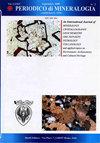基于VGG-19结构的深度神经网络对脑肿瘤磁共振成像的检测与分类
IF 1.2
4区 地球科学
Q3 GEOCHEMISTRY & GEOPHYSICS
引用次数: 1
摘要
当前位置大脑区域异常细胞的大量生长被称为肿瘤。在现代医学领域,该病被视为高发疾病,治疗难度大。这种类型的肿瘤只有在早期被诊断出来才能得到控制。为了进行准确的分析和诊断过程,放射科医生使用MR成像工具。肿瘤的确切部位可以通过大脑区域的磁共振成像来确定。提出了一种基于视觉几何群(VGG-19)架构的深度卷积神经网络(DCNN),用于从脑磁共振成像(MRI)数据集中检测脑区域的恶性部分。我们的实验研究使用了公开的BraTS数据集。本文提出的DCNN采用一种基于层的自动分割和分类技术,系统的层次结构依次为预处理、分割、特征提取和分类。为了有效地对脑磁共振图像进行分类,在分类过程中使用了softmax分类器。综上所述,该系统的训练和测试准确率结果为99.2%,训练和测试损失结果分别为0.158和0.138。本文章由计算机程序翻译,如有差异,请以英文原文为准。
Detection and Classification of Brain Tumor on MR Imaging using Deep Neural Network based VGG-19 Architecture
: The massive growth of abnormal cell development in the brain region is known as a tumor. It is treated as a high prior disease in the modern medical domain, and it is difficult to cure. This type of tumor can be controlled only if it is diagnosed at an earlier stage. For making the accurate analysis and diagnosis process, the MR imaging tool is used by the radiologist. The exact portion of the tumor can be addressed by an MR image from the brain region. A deep convolutional neural network-based (DCNN) on Visual Geometry Group (VGG-19) architecture is proposed to detect the malignant portion in the brain region from the brain magnetic resonance imaging (MRI) dataset. The publically available BraTS dataset is used in our experimental study. The proposed DCNN uses a layer-based automatic segmentation and classification technique, and the hierarchy of the system is followed by, preprocessing, segmentation, feature extraction, and classification. A softmax classifier is used alongside the classification process, in order to classify the brain MR images efficiently. All together, obtained training and testing accuracy outcome of the proposed system is 99.2%, and the training and testing loss outcomes are 0.158 and 0.138 respectively.
求助全文
通过发布文献求助,成功后即可免费获取论文全文。
去求助
来源期刊

Periodico Di Mineralogia
地学-地球化学与地球物理
CiteScore
1.50
自引率
14.30%
发文量
0
审稿时长
>12 weeks
期刊介绍:
Periodico di Mineralogia is an international peer-reviewed Open Access journal publishing Research Articles, Letters and Reviews in Mineralogy, Crystallography, Geochemistry, Ore Deposits, Petrology, Volcanology and applied topics on Environment, Archaeometry and Cultural Heritage. The journal aims at encouraging scientists to publish their experimental and theoretical results in as much detail as possible. Accordingly, there is no restriction on article length. Additional data may be hosted on the web sites as Supplementary Information. The journal does not have article submission and processing charges. Colour is free of charges both on line and printed and no Open Access fees are requested. Short publication time is assured.
Periodico di Mineralogia is property of Sapienza Università di Roma and is published, both online and printed, three times a year.
 求助内容:
求助内容: 应助结果提醒方式:
应助结果提醒方式:


